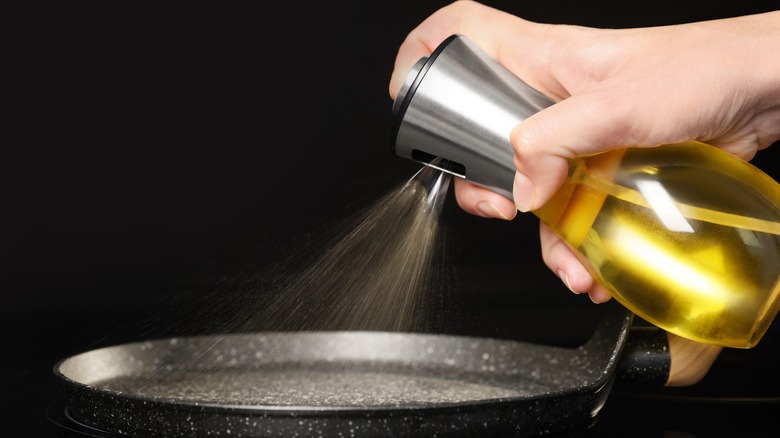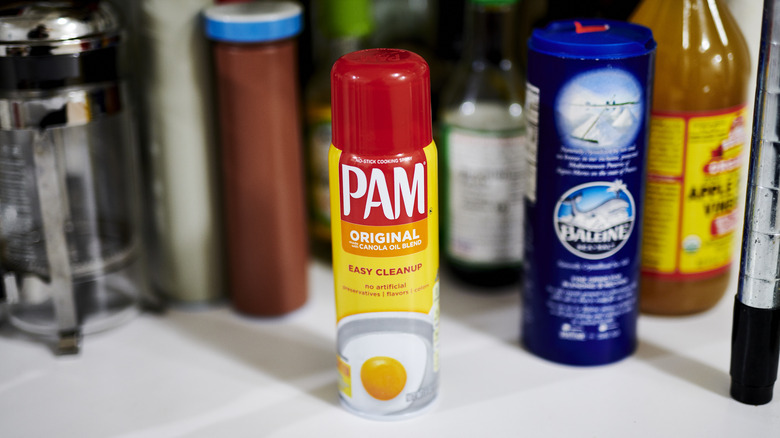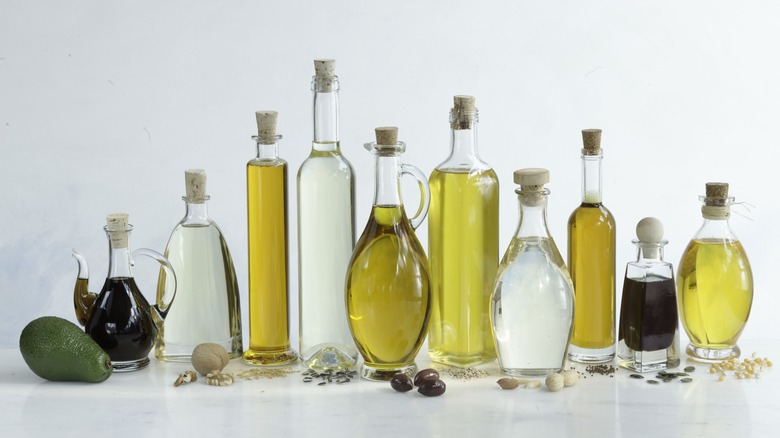The DIY Cooking Spray Hack That'll Work Wonders In A Pinch
Whether you want to grease a cake pan in seconds or spritz your air fryer with a nonstick coating, cooking spray has your back. The classic yellow aerosol bottle can be seen in kitchen pantries everywhere and is a great substitute when you don't want to get out the bottle of canola oil or melt a stick of butter. But that convenience comes with a price: Those cans (and dollars) can add up over time, and with some cooking sprays containing extra ingredients like preservatives, they're not always the optimal choice. So along with one mistake you may be making with cooking spray, you might just want to skip it and make your own.
Luckily, it's simple to make your own cooking spray at home. With just water, oil, and a mister bottle that you can pick up from any kitchen or garden store, you can whip up a spray that will do the same job with less cost, less waste, and fewer additives than the grocery store version. (And it'll even taste better!)
What makes up a cooking spray?
Before you use cooking spray in a nonstick pan, you may be wondering what exactly goes into cooking spray. Most standard cooking sprays contain a type of oil and a lecithin, which is a substance used to emulsify the spray and stabilize the various ingredients. Beyond that, you might find anti-foaming agents that keep the oil from frothing when sprayed; propellants, which are gasses that help force the oil forward when the button is pressed on the can; and sometimes artificial flavors, depending on the variety you choose.
While packaging a shelf-stable cooking spray takes a lot of ingredients, recreating something similar at home is much more simple. By using a spray bottle instead of an aerosol can, you no longer need anti-foaming agents or propellants; artificial flavors can be reproduced with natural ingredients as well. The two most important things you need are your oil and some water.
The way to make a homemade spray
Ready to make a homemade spray? First, decide what oil you'll be using. You can use any variety of oil: canola oil, olive oil, walnut, avocado, or any number of others. If you would like, you can flavor your oil before using it (or purchase pre-flavored oil); just be sure to strain out any solids.
Next, you'll want to thin out the oil with some water so that it can easily pass through the nozzle of your spray bottle without gunking up the works. Use 1 cup of water per 2 tablespoons of oil.
Finally, if you would like, you can use lecithin to ensure the oil and water emulsify properly. Use food-grade liquid lecithin, which you can buy from many different retailers online or in stores. This is an optional step: If you don't use the lecithin, you may have to shake the bottle extra well before each use.
Once you have your spray, store it in a cool and dry place, as you would any bottle of oil in your pantry.


